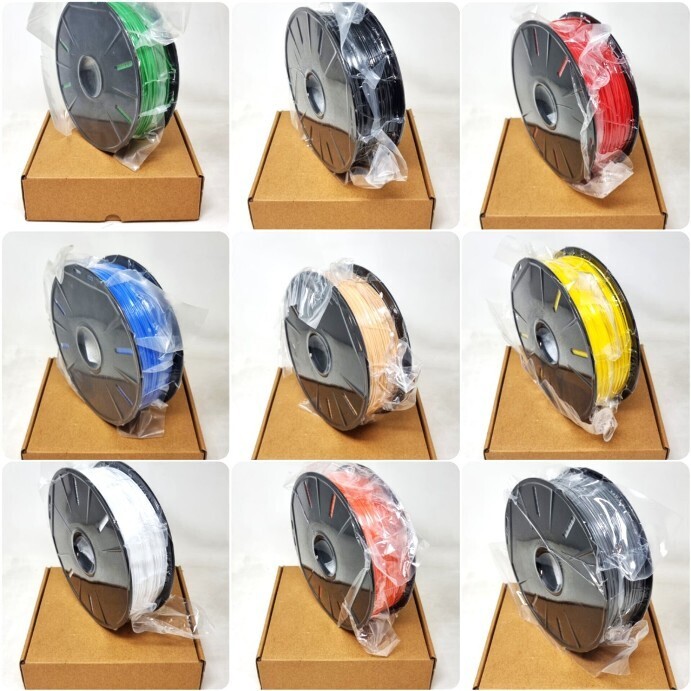PETG Filament 1.75mm
PETG (polyethylene terephthalate glycol)
The PETG material is essentially the same as the known PET material from which PET bottles are made. The G in the acronym PETG stands for Glycol which is added during the manufacturing process. Glycol modifies the properties of PET so that it’s easier to print and less brittle.
It is a strong and tough material, which is characterized by good thermal stability.
Thanks to the small shrinkage during printing, it is suitable for printing large objects.
PETG has mechanical and thermal properties better than ABS and bearing the printing properties of PLA.
- PETG is a universal material
- for beginners (very easy to print)
- father for large prints
- high impact material than PLA, same as ABS
- temperature resistant up to 70 °C
- no warping
- ideal for mechanical parts (used as one of the main materials for our Prusa Bear Upgrade 3D Printers)
Features
Filament Dia - 1.75mm
Material weight - 1 kg
Weight with spool - 1.2kg (approx)
Empty spool weight - 185 grams
Weight with packaging - 1.3kg
Recommended printing temp (Heat Bed) - 80 to 85 degree Celsius
Recommended printing temp (Hotend) - 240 degree Celsius
Technical Data Sheet (TDS)
| Properties | Method | Typical Values |
| Density | N/A | 1.05 g/cm cube |
| Shrinkage | ASTM D792 | 0.5-0.6% |
| Flexural Modulus | ASTM D790 | 2620 MPa |
| Tensile Strength | ISO 527-2/50 | 47.0 MPa |
| Elongation At Break | ISO 527-2/50 | ≤ 30% |
| Heat Deflection Temperature | ISO 75-2/A | 90°C |
